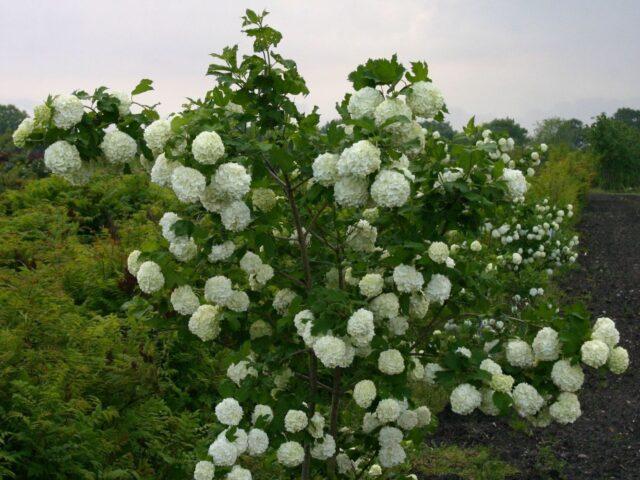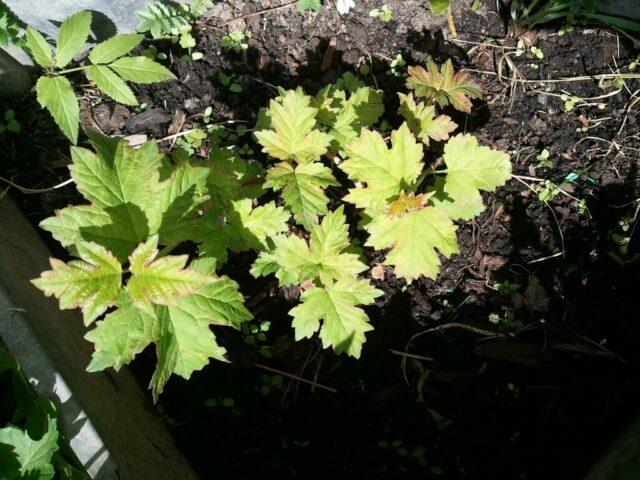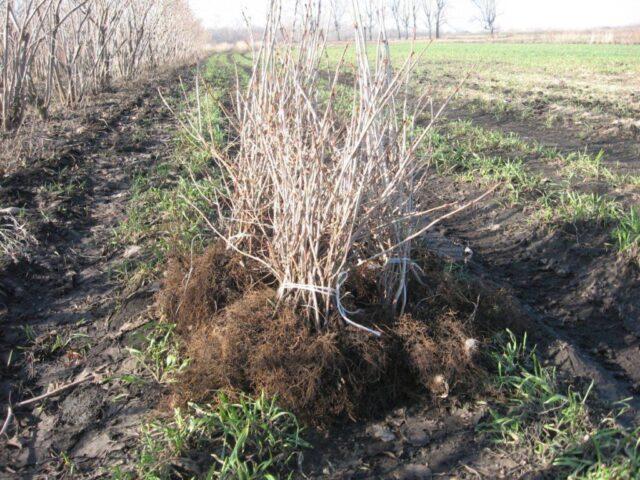Content
Ornamental shrubs are very attractive for gardeners, as they not only decorate the territory, but make it unique and cozy. The common viburnum Roseum is no exception, its bright greenery and white caps of flowers look great on a site decorated in any style.
Breeding history
It is difficult to imagine any private house without the viburnum growing nearby with its white inflorescences and scarlet berries that adorn the bush until winter. In the wild, the plant is distributed throughout the northern hemisphere. It was used in cooking and folk medicine. Later, breeders became interested, as a result of their work, new varieties were created that differed from the original in the size of the bush, the shape of the inflorescence and other characteristics. Viburnum opulus Roseum is one of them. Scientists have bred an ornamental plant that pleases the eye with huge caps of flowers, but does not form berries.
Description of the variety of viburnum ordinary Roseum and characteristics
Viburnum vulgaris Roseum is a tree or shrub from the Adoskov family 3 m high, crown width up to 4 m.The shoots of the plant can be rounded or ribbed, their color is gray-brown, the core is white or yellow. The buds are red-green, with a pointed tip and two accrete scales.

The flowering of Roseum viburnum is abundant - up to a hundred buds can simultaneously bloom on an adult plant
The leaves of the viburnum ordinary Roseum are opposite, petiolate. Length and width - about 6 cm. The shape is three- or five-lobed with a heart-shaped base and diverging veins. The color is bright green, the structure is wrinkled above, pubescent and velvety below.
According to the photo and description, the common viburnum Roseum forms snow-white flowers in the form of balls. They appear at the end of May, at first they have greenish tints, and later turn white and turn slightly pink. The diameter of each is up to 15 cm. The crown of the plant is spreading, the annual growth is about 30 cm. The bush reaches its peak by the age of eight.
Viburnum ordinary Roseum is frost-resistant, easily tolerates temperatures down to -30 ⁰С, but in severe winters with little snow, it requires shelter of the base of the bush.
Reproduction methods
Viburnum ordinary Roseum can only be propagated by vegetative methods. They use the method of cuttings, layering or dividing the bush.
By cuttings
One of the most effective ways. Cuttings are cut from viburnum in winter when it is in hibernation. They take annual shoots up to 20 cm long, dip them into a container with water and incubate for 3 hours. After that, the planting material is packed in plastic wrap and placed in a cellar, basement or refrigerator until spring. In April, cuttings of the common viburnum Roseum are planted at an angle on the garden bed.

In the fall, ready-made seedlings are transferred to a permanent place.
Planting material of the common viburnum Roseum can be prepared in July, choosing the most flexible parts of the stems 12 cm long with two buds. After incubation for 16 hours in a rooting stimulator, it is determined in a substrate of sand, peat and turf.
Layers
The easiest way to propagate the decorative Roseum viburnum is vertical and horizontal layering.
In the first case, the lower branches of the shrub are shortened to four buds, tilted to the ground and sprinkled with soil. In spring they give young shoots. As soon as they reach a height of 10 cm, they are again covered with soil. In autumn, the seedlings of the common viburnum Roseum are separated from the mother plants and transplanted.
Horizontal layering is made from long branches. They are bent down, laid in a small trench, pinned and covered with earth. Twice a season, the layers are covered with fertile soil. In the fall, after rooting and the formation of growth, young plants of the common viburnum Roseum are transplanted.
By dividing the bush
The method is convenient only if the plant is not very voluminous and can be easily dug out. The mother bush is carefully cut into several parts, the sections are disinfected and the roots are soaked in a growth stimulator for 2-3 hours. After that, "delenki" of the common viburnum Roseum are planted in compliance with all the rules.
Planting and caring for Roseum viburnum
In order for the viburnum to take root as quickly as possible and begin to develop, it is necessary to comply with the terms and conditions of planting. It is equally important to choose the right place, prepare the soil and provide the plant with the necessary care.

The seedlings must be healthy and have a strong root system.
Landing dates
Most often, Roseum ordinary viburnum is planted in spring or autumn. The best time to plant in the southern regions is October or early November, just before the onset of frost. In more northern areas, seedlings are determined to a permanent place in early spring, as soon as the soil thaws and warms up.
Site and soil requirements
In the wild, viburnum most often settles near rivers and lakes, as it prefers moist soil. The same conditions must be chosen for seedlings of the common viburnum Roseum on the site. The variety thrives on water bodies, in places with a high groundwater table. It is shade-tolerant, thrives under other, taller trees or near fences and buildings.
The soil for viburnum should be loose, cultivated. Black soil, loam or sandy loam are suitable. If the acidity is above 5.5 pH, liming with dolomite flour (200 g per square meter) is necessary.
How to plant correctly
The appearance, splendor and power of flowering of the common viburnum Roseum in the near future depends on how correctly the bush is planted. The algorithm should be followed:
- Dig the soil thoroughly to the depth of the shovel bayonet.
- Make holes 60 cm wide and deep.
- Pour plenty of water to the bottom if the soil is dry.
- Lay a drainage layer up to 25 cm thick from gravel, expanded clay, broken brick or tree bark.
- Prepare a soil mixture of turf, peat and sand mixed in a 2: 1: 1 ratio.
- Add 400 g of wood ash and a bucket of humus to the substrate.
- Pour the prepared mixture into the pit.
- Set the seedling in the center.
- Spread its roots.
- Fill the voids with soil mixture.
- Tighten it a little.
- Water abundantly.
- Mulch the trunk circle with wet sawdust, foliage or peat in a layer of 15 cm.

After planting the common viburnum Roseum, the root collar should be located at soil level
Follow-up care
Viburnum ordinary Roseum is not demanding on growing conditions. Caring for her is not difficult. With regular watering, timely feeding and proper pruning, the plant will very soon delight you with powerful growth, beautiful, abundant and long flowering.
Watering
Viburnum ordinary Roseum loves water, therefore drying out the soil is destructive for it. The soil in the trunk circle must be constantly kept moist.Otherwise, the flowers will be small, few in number, and the bush will stop growing, lose the bright color of the foliage and splendor.
Top dressing
For the first time, you need to fertilize the soil under the plant two years after planting the seedling. Until that time, he will have enough of those nutrients that were introduced into the pit. The first feeding is carried out in the spring, during the period of foliage. 50 g of nitrogen, 20 g of potassium and 40 g of phosphorus are added under one plant.
At the beginning of autumn, potassium-phosphorus fertilizer is used to accelerate the maturation of young shoots of an ornamental shrub. For one plant, 40 g of phosphorus and 20 g of potassium are enough.
Pruning
For sanitary purposes and for the rejuvenation of the Roseum viburnum bush, weak, dry and damaged branches are regularly removed. Cut out all the shoots growing inside the crown and those whose length turned out to be more than 30 cm. As a result of the shearing, a neat, beautifully shaped bush should be created.

To form a trunk, one trunk is left, all lower branches are removed
Pests and diseases
The most important pest of the common viburnum Roseum is the leaf beetle. In late May - early June, the insect eats up all leaf tissue, leaving only veins, lays eggs under the bark. The beetle does not leave a chance for flowers, eating the petals and depriving the bushes of decorativeness. To protect against the pest, folk remedies are used - spraying with a decoction of garlic, nightshade and wormwood.

With the massive spread of the leaf beetle, they are treated with chemical preparations - "Intavir" or "Aktara"
Do not wait for the Roseum Viburnum to bloom if it is attacked by other insects:
- viburnum gall midge;
- flower moth;
- lilac hawk moth;
- comma-shaped scabbard.
The most effective insect repellent is insecticides.
Among the most common diseases of the common viburnum Roseum are powdery mildew and spotting. To combat them, drugs based on copper sulfate are used.
Application in landscape design
Viburnum ordinary Roseum looks spectacular in both single and group plantings. The dense crown of the shrub is used to create hedges around the perimeter of the site or to divide it into zones. The height can be easily adjusted with a haircut.
The magnificent flowers of the viburnum of the common variety Roseum serve as an excellent background for annual and perennial flowers (phlox, delphiniums, marigolds, salvias). Conifers perfectly set off the white-pink flowers of the shrub, if planted in the background in relation to the viburnum.
On the site, it is easy to create a cozy corner for relaxation, if combined with other ornamental shrubs (spirea, jasmine, hydrangea).

Rowan, maple or spruce are planted as neighbors of viburnum
Advantages and disadvantages of the variety
Viburnum ordinary Roseum has a number of advantages thanks to which it has become very popular.

The main feature of the Roseum viburnum is its luxurious flowering and the absence of berries.
Among the advantages of the variety:
- High decorative effect.
- Beauty, size and abundance of flowers.
- The ability to use to create a hedge.
- Compatibility with other plants.
- Early and long flowering.
- Frost resistance.
- Unpretentiousness.
- Loyal attitude to the haircut.
There are few minuses to the common viburnum Roseum:
- Lack of berries.
- Frequent defeat by leaf beetle.
Conclusion
Viburnum ordinary Roseum not only delights in beauty at the time of flowering, but also easily tolerates strong gas pollution and air pollution. For this reason, the shrub is used in urban environments to decorate squares, parks and green areas. When the necessary conditions are created, it grows beautifully, develops and blooms.












